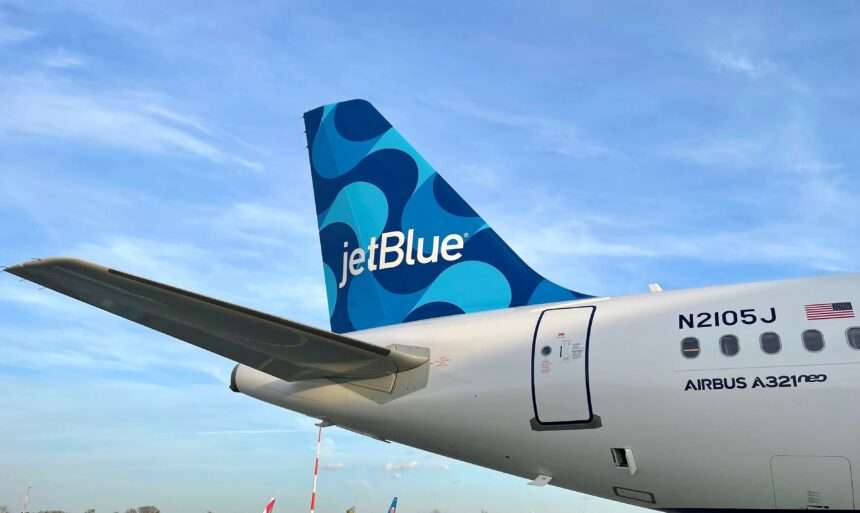All Nippon Airways (ANA) will begin a series of inspections of engine manufacturer Pratt & Whitney’s PW1100G-JM engines installed on the Airbus A320neo and A321neo aircraft from January 2024.
Background
The inspections come as the engine manufacturer indicated that there may have been issues during the powdered metal manufacturing of internal engine parts which were manufactured between October 2015 and September 2021.
As a result, ANA received a directive that the engines which contain the subject parts must be inspected or replaced within a specified period of time.
This maintenance requirement, set to be undertaken by the airline in January 2024, aims to address potential issues related to the manufacturing of certain engine components.
Aircraft Affected
A total of 33 aircraft will undergo these inspections, comprising 11 A320neo and 22 A321neo models, which are equipped with the PW1100G-JM engines.
The inspection process is scheduled to commence in January 2024, starting with aircraft nearing their scheduled expiration dates.
[monsterinsights_popular_posts_inline]
Parts Subject to Inspection
The specific components called out for inspection and potential replacement are the high-pressure compressor disks and the high-pressure turbine disks.
To grasp the significance of these inspections, it’s essential to understand the role of the components in question.
The high-pressure compressor disks and high-pressure turbine disks are vital elements within the engine’s intricate machinery.
These disks are rotating plates attached to the engine’s shaft, responsible for securing the blades in place. Ensuring their integrity is crucial for the overall performance and safety of the engine.

Inspection Process and Special Measures
To execute the inspections effectively, ANA will adhere to a structured process outlined in the Service Bulletin prepared by P&W, which is set to be issued in November 2023.
The steps involved in the inspection and potential replacement of the components are as follows:
- Removal of PW1100G-JM Engine: ANA will remove the subject engine from the aircraft.
- Disassembly: The engine will be disassembled at a specialized Maintenance, Repair, and Overhaul (MRO) facility.
- Ultrasonic Inspection: Using advanced Ultrasonic Inspection technology, the MRO facility will meticulously check the subject parts for any defects. If any defects are identified, the affected components will be promptly replaced.
- Replacement of Parts: Any components found to be defective will be replaced with brand-new parts.
- Reassembly: The engine will be reassembled at the MRO facility.
- Installation: Once reassembled, ANA will reinstall the engine onto the aircraft.
It’s important to note that the entire process, from PW1100G-JM engine removal to reinstallation, is estimated to take between 250 to 300 days per engine.
These inspections and replacement procedures are reinforced safety measures based on P&W’s latest analysis, and they have been meticulously planned to eliminate any potential operational risks.
Importantly, these precautions are designed to ensure passenger safety and guarantee uninterrupted flight operations.
MRO Facilities
The maintenance and inspection of these engines will be undertaken by MRO facilities arranged by P&W.
These facilities, including industry leaders like IHI Corporation and Mitsubishi Heavy Industries Aero Engine Co., possess the expertise and technology needed to execute the inspections and replacements in accordance with the Service Bulletin requirements.
Minimal Impact on Operations
It’s important to emphasize that these additional inspections and parts replacements, incorporating Ultrasonic Inspection technology, are pre-emptive measures to mitigate any potential malfunctions.
These actions have been taken to ensure passenger safety, and they are implemented well in advance of any specified deadlines.
As a result, there will be no impact on the safety of ANA’s operations until the specified deadline is reached.
Furthermore, ANA is dedicated to minimizing disruptions for its passengers. In the unlikely event that an engine requires replacement, it will be removed before the manufacturer’s specified deadline, and the affected aircraft will be equipped with updated, fully reliable engines.
This process ensures that operational risks are eliminated, and passenger safety remains uncompromised.
Impact on Flight Schedule
Due to these necessary inspections, ANA anticipates a temporary reduction in select flights on both domestic and international routes.
ANA will reduce flights on select domestic and international routes from January 10, 2024 to March 30, 2024. Approximately 30 flights per day will be reduced, resulting in a reduction rateof 3.6%.
Reduced flight schedules will mainly be prioritized on routes where alternate flights are available on the same day, such as Haneda=Itami and Fukuoka, and Haneda=Seoul (Gimpo).
Passengers are encouraged to refer to ANA’s official website for the most up-to-date information regarding their flights.

Click the banner to subscribe to our weekly newsleter.









